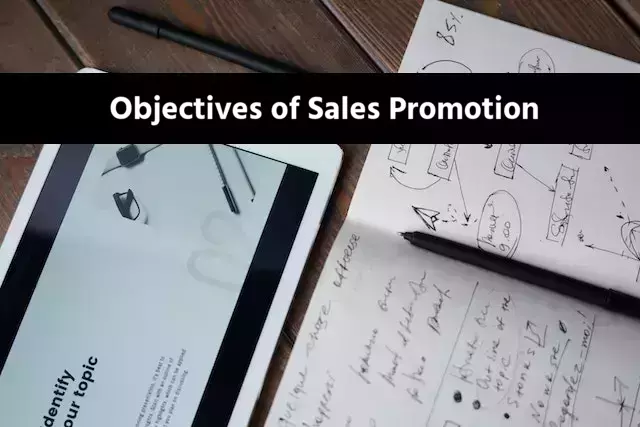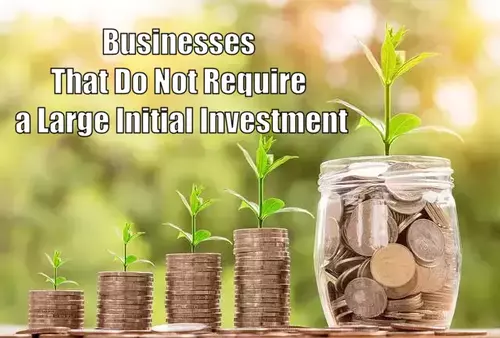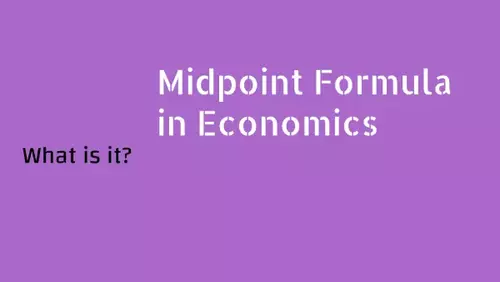Sales promotion is an essential tool in the marketing mix that aims to increase sales, attract customers, and, of cause, encourage repeat sales and business. It involves short-term incentives that are designed to stimulate consumer spending and enhance brand awareness. The objectives of sales promotions are diverse, ranging from boosting sales for a limited period to developing long-term relationships with customers.
In this blog, we’ll explore the different objectives of sales promotion and how they can be used effectively to achieve your marketing goals. Whether you’re a small business owner or a marketing professional, understanding the objectives of sales promotion can help you create effective programs that drive revenue and build customer loyalty. So, let’s dive in!
Introduction: Defining Sales Promotion & its Objectives
In the world of marketing, sales promotion is one of the key strategies used to drive sales and increase revenue. In this section, we will define sales promotion and discuss its objectives. Put simply, sales promotion refers to the use of marketing techniques to stimulate short-term buying behavior from customers. The main objective of sales promotion is to increase sales within a specific timeframe.
As discussed in previous sections, increasing sales is the ultimate goal of any business, and sales promotion is a powerful tool to achieve that goal. Other important objectives of sales promotion include retaining customers, creating awareness, encouraging trial, building brand image, differentiating from competitors, boosting sales force morale, enhancing customer experience, and building relationships.
Sales promotion can take many forms, including discounts, coupons, loyalty programs, free samples, demonstrations, contests, events, personalized promotions, and CRM. Each of these forms has a specific objective and is designed to achieve a specific goal.
Increasing Sales: The Ultimate Goal
The main objective of any sales promotion is to increase sales, making it the ultimate goal for every business. If you’re looking to boost your profits, then incentivizing your customers to make purchases through various promotions is the way to go.
Sales promotions offer a wide range of tactics to increase sales from coupons and discount codes to limited-time offers and bundled deals. By providing these promotions, you can encourage customers to make more purchases while rewarding them for their loyalty.
Moreover, sales promotions can help move stock that may not be selling as well as you hoped. These promotions can attract customers’ attention to items they may not have noticed before or see as valuable.
However, offering these promotions shouldn’t be done haphazardly. It’s important to be strategic in the type of promotion you offer for the product or service you’re selling, taking into account the return on investment.
But don’t forget about the importance of tracking your promotion’s performance. With the right data analytics tool, you can monitor your promotion’s effectiveness in real-time, identify which promotions are driving the most sales, and optimize your future promotions to drive even more success.
Retaining Customers: Importance of Loyalty Programs
Retaining customers is an essential part of any successful business, and loyalty programs can make a huge difference. By rewarding customers for their loyalty, companies can ensure that their customers keep coming back. As discussed earlier, customer loyalty programs have a myriad of benefits, including increased revenue, saving money, customized user experience, customer satisfaction, better communication, and attracting new clients. All of these benefits culminate in the ultimate goal of increasing sales.
Loyalty programs help to foster stronger relationships between customers and the company, and encourage repeat business. By offering rewards for customer loyalty, companies can differentiate themselves from their competitors and create unique selling propositions. Free samples and demonstrations are a great way to encourage trial, while event and contests promotions enhance the customer experience.
But the key to a successful loyalty program is personalization. By gathering data on customers’ preferences and behaviors, companies can offer personalized promotions and enhance their CRM strategy. This not only boosts customer loyalty but also provides valuable insights for the company’s marketing strategy.
Creating Awareness: Informing Target Audience
Sales promotion is a vital tool in creating awareness about your product or service. The ultimate goal of promotion is to get people interested in what you have to offer. To achieve this goal, the first objective is to inform the target audience. The target audience includes potential customers, current customers, and stakeholders.
To inform potential customers, the use of advertising is highly recommended. Advertising can be done through various media such as TV, radio, or print. The purpose of advertising is to achieve comprehensive coverage of the audience. By crafting an effective advertising message that highlights the key benefits of your product or service, you can reach a wider audience and create awareness.
Another way to inform the target audience is through the use of free samples and demonstrations. This is especially useful for new products that people may not be familiar with. By offering free samples, potential customers can try the product or service and get a taste of what it offers. Demonstrations, on the other hand, can show how the product works and its key features. This method is highly effective in creating awareness and can also encourage trial and purchase.
Building brand image is instrumental in creating awareness in the minds of potential customers. Use of customized advertising to highlight the company’s goals and objectives can be a highly effective way to create an image in the minds of consumers. This image forms the basis for how potential customers view your brand.
It is important to differentiate your product or service from your competitors. Highlighting your unique selling proposition will help potential customers understand the value that you offer over your competitors. This can be done through advertising or other forms of promotions.
By creating awareness through various promotion methods, you can inform the target audience about your product or service. Other objectives such as increasing sales, retaining customers, boosting sales force morale, and enhancing customer experience can also be achieved. Utilizing promotions effectively is essential in achieving overall sales success.
Encouraging Trial: Free Samples & Demonstrations
To encourage trial, sales promotion tactics such as offering free samples and demonstrations are highly effective. By providing consumers with an opportunity to try a product before making a purchase, companies can increase the chances of conversion and foster customer loyalty.
Free samples not only encourage trial but also create an increased awareness of the product. This is because when consumers try a product, they are more likely to remember it and talk about it, leading to positive word-of-mouth buzz. This is a valuable marketing tool as it can help to create brand advocacy, which can lead to increased sales through referrals.
Demonstrating a product to consumers also helps to create awareness and generate interest. When consumers see a product in action, they are more likely to be convinced of its efficacy and value. This is why product demos at trade shows and in-store events can be so powerful. By showing consumers how a product works, companies can inspire confidence in their brand and create a lasting impression in the consumer’s mind.
Encouraging trial through free samples and demonstrations is just one element of a successful sales promotion strategy. By combining it with other tactics, like loyalty programs and unique selling propositions, companies can create a powerful marketing plan that effectively increases sales and builds customer relationships. To achieve these objectives, it’s important to keep the customer at the center of the strategy and make them feel valued and appreciated. By doing so, companies can create a positive customer experience that leads to long-term loyalty and advocacy.
Building Brand Image: Increasing Brand Awareness
In order to truly stand out in a crowded market, it’s vital to focus on building brand image and increasing brand awareness. By creating a positive perception of your brand in the minds of your target audience, you can set yourself apart from competitors and drive long-term success.
One effective way to build brand image is through consistent, high-quality messaging and marketing efforts across multiple channels. By ensuring that your brand’s message is clear, compelling, and resonates with your target audience, you can create a lasting impression in their minds.
Another key strategy is to leverage unique selling propositions to communicate the unique value your brand offers compared to competitors. This can include highlighting key features or benefits, emphasizing your brand’s mission or values, or showcasing social proof through customer testimonials or case studies.
Additionally, events and contest promotions can be powerful tools for building brand awareness and enhancing customer experience. By offering unique and memorable experiences that are aligned with your brand’s values and messaging, you can create strong emotional connections with your target audience and drive lasting loyalty and advocacy.
Differentiating from Competitors: Unique Selling Propositions
Are you struggling to stand out from your competitors? Look no further than Unique Selling Propositions (USPs). USPs are the key factors that distinguish your business from others in the market. By highlighting what sets you apart, you can attract new customers and increase brand loyalty.
First, research your competitors to identify their strengths and weaknesses. Then, use that information to create a USP that showcases your unique benefits. This could be anything from superior quality to exceptional customer service. Whatever it is, make sure it is not already being offered by your competition.
Next, integrate your USP into your marketing campaigns. Use slogans, logos, and advertising to communicate a clear and consistent message to your target audience. Make sure your USP is prominently displayed on all your promotional materials.
Don’t forget to regularly evaluate your USP and adjust it as necessary. The market is constantly changing, so stay current and relevant.
By effectively differentiating yourself from your competitors, you can establish brand authority and attract loyal customers. Incorporate USPs into your overall marketing strategy and watch your business flourish.
Boosting Sales Force Morale: Incentives for Performance
To achieve the ultimate goal of increasing sales and achieving business objectives, boosting sales force morale is critical. Sales teams who feel motivated and appreciated are more likely to go the extra mile and achieve their goals. Providing incentives for performance is an excellent way to show recognition for their efforts and effectively boost their morale.
Offering incentives such as bonuses, commission plans, and rewards for top performers can go a long way in keeping sales teams motivated. These incentives give sales team members a sense of accomplishment and recognition for their efforts, while providing a financial boost and recognition. Additionally, recognizing top performers in front of the team can foster healthy competition within the team and encourage everyone to strive for success.
Not only does incentivizing performance boost morale, but it also helps retain valuable employees. When employees feel valued and appreciated, they are more likely to stay loyal to the company. By investing effort into boosting sales force morale, businesses can reduce costs associated with employee turnover and recruitment.
Enhancing Customer Experience: Event & Contest Promotions
Now that we’ve covered some key objectives of sales promotion, let’s dive into enhancing the customer experience through event and contest promotions! These types of promotions not only provide an opportunity for customers to engage with your brand, but they also create a memorable experience that can lead to brand loyalty and word-of-mouth recommendations.
Hosting events such as product launches, customer appreciation days, or even pop-up shops can create a buzz around your brand and give customers a chance to interact with your products in a fun and unique way. Contests and giveaways also offer a way to engage with customers and incentivize them to try your products or services. Whether it’s a social media contest or a random drawing at an event, the chance to win something can create excitement and buzz around your brand.
But it’s not just about the promotional aspect – events and contests also provide an opportunity to gather valuable customer feedback and insights. Use these occasions to gather feedback on new products or services, or to ask customers about their experience with your brand. This information can be invaluable in shaping future marketing and promotional efforts.
By enhancing the customer experience through events and contests, you’re not only boosting brand awareness and sales, but also building meaningful connections with your customers. Personalized promotions and CRM can also go a long way in building those relationships, which we’ll cover in the next section. So, get creative with your event and contest promotions and watch your customer experience (and sales) soar!
Building Relationships: Personalized Promotions & CRM.
Excited to continue exploring the various objectives of sales promotion, let’s dive into the final section all about building relationships!
One of the most important objectives of sales promotion is to build strong relationships with customers, both current and potential. Personalized promotions and customer relationship management (CRM) are key components in achieving this objective.
Personalized promotions involve tailoring promotional efforts to individual customers based on their past behavior, preferences, and demographics. This can include targeted email campaigns, personalized coupons or offers, and even customized products. By demonstrating that you understand and value each customer on an individual level, you can deepen their loyalty and encourage repeat business.
CRM, on the other hand, involves collecting and analyzing customer data to better understand their needs and preferences. This data can then be used to personalize promotions and communications, as well as to improve overall customer experience. By taking a proactive approach to understanding and meeting customer needs, you can foster long-lasting relationships built on trust and mutual understanding.
Incorporating personalized promotions and CRM into your sales promotion strategy can go a long way in building strong relationships with your customers. By understanding their unique needs and preferences and tailoring promotional efforts to meet them, you can deepen loyalty, improve customer experience, and ultimately drive sales. Are you ready to take this important step towards building lasting relationships with your customers?







